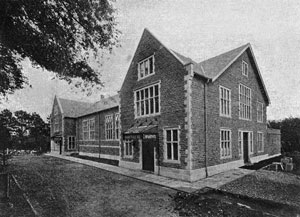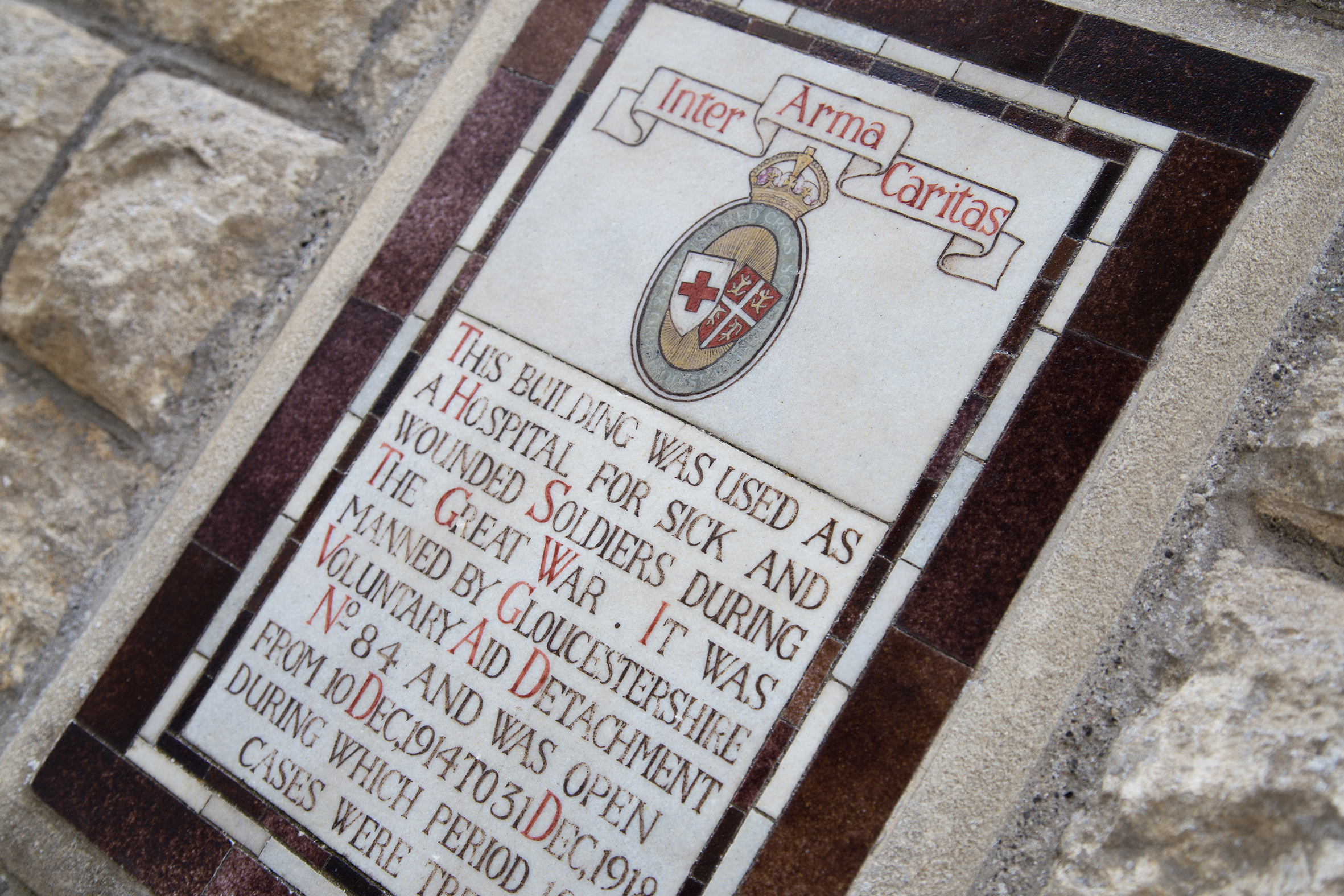Daniel George Bingham
1830-1913
The Bingham Hall is named after its benefactor, Daniel George Bingham, who was born in Cirencester in 1830. Although his career was to take him far from Cirencester he never forgot his home town and funded several significant projects following his retirement in 1890. Daniel Bingham died in Utrecht in 1913.
The Bingham Centenary - A Short History
Daniel George Bingham was born, the son of a cabinet maker, in Black Jack Street, Cirencester, on 16th March 1830. He was educated locally and, on leaving school in the 1840s, joined the staff of the Great Western Railway and worked at Cirencester Town station.
His talents brought him to notice and in 1855 he was promoted and transferred to the Head Office at Paddington station. In 1858 he was invited to move to Holland to re-organise the Dutch-Rhenish railways becoming the general manager in 1862. There he remained for the rest of his career amassing a sizeable fortune by the time of his retirement in 1890.
Initially Mr Bingham and his wife Jane had thoughts of returning to England, possibly to Box in Wiltshire, where they bought a property which they redeveloped by 1902. However, they had many ties in Holland and remained there returning to Box only for the occasional visit.
Daniel Bingham did not forget his home town of Cirencester and, on 21st September 1903 had a deed of endowment drawn up for what was to become a grand library to replace the town’s existing public library then housed in the Corn Hall. Work on the Dyer Street site commenced the following year, the foundation stone being laid by Earl Bathurst on 21st January 1904. The building was completed in the following year and Daniel Bingham was present at the formal opening on 21st September 1905.
In 1905 Daniel Bingham purchased a parcel of land in Watermoor with the intention, as expressed in a Trust Deed drawn up in 1907, to ‘construct thereon a Hall and Rifle Range for the benefit of the inhabitants... and the erection on the said piece of land of sundry Villas and Cottages’ as a gift to the people of Cirencester.
The Hall was constructed in just over seven months, during the course of which Roman remains were found and part of the Roman Ermin Street uncovered. It was formally opened by Mrs Jane Bingham on 14th October 1908. To test the acoustics in the new Hall a play, ‘A Runaway Girl’, was performed after which it was decided to soundproof the ceiling. As the Hall was being built work was also in progress to build a lodge for the manager, cottages in King Street and villas in Watermoor Road.
“A hall to benefit the inhabitants”
Early use of the Hall included drilling, gymnastics and theatre plus a variety of social events. The Rifle Range, then very much 'state of the art', was used by the Cotswold Rifle Club, still in being today. 1914 saw the outbreak of The Great War during which the Hall and Rifle Range were used as a Red Cross Hospital for wounded servicemen brought from the battlefields to Cirencester by way of Watermoor Station. In January 1919 the building was handed back to the Trustees. During the short inter-war period that followed both Hall and Rifle Range continued to be used as Daniel Bingham intended.
With the outbreak of World War II in 1939 the Trustees, for the second time in the Hall's history, took a back seat in its management. The Hall and its facilities were used to house, in turn, the Pioneer Corps, the New Zealand Foresters and United States 15th Hospital Centre Administration staff. It was the New Zealanders who constructed a 'temporary' wooden extension adjoining the Hall in Duffin's Yard. This in fact stood for over half a century and provided much needed extra storage space. When the war came to a close the Hall was returned to the Trustees although, regrettably, it was left in a rather poor condition.
The loss of income during the war years left the finances in a sorry state. Nonetheless the Hall was able to partially resume its original function of providing facilities for theatre, dancing, balls and general entertainment. The nearby Cirencester Grammar School was the first organisation to request some use of the facilities as the number of pupils had increased markedly during the war years.
Gradually the post-war period saw a full resumption in the use of the Hall, particularly for events such as theatre and dancing. During the winter months of the 1950s and 1960s, in particular, half a dozen balls were held annually. For the duration of 'the season' a special removable 'sprung floor' was put down.
Eventually finances from the increased use of the Hall enabled the Trustees to build up sufficient funds to commence a programme of redecoration, refurbishment and repair. By the 1990s chandeliers had been installed in the Main Hall and more modern seating purchased. A rolling programme to maintain and update the cottages and villas was also begun.
The 21st Century saw the demolition of the wooden store and its replacement with a fine storage building faced with stone from the adjoining wall thus matching the remainder of the Hall. Again the excavations for the foundations revealed more of Ermin Street and signs of adjacent Roman buildings. More recently a new storage facility was added.
And so the Hall continues to be used in the manner intended by Daniel George Bingham a century ago. It houses a kindergarten and provides a focal point for public, private and charitable events. Even the Cotswold Rifle Club continues to flourish despite legislation strictly limiting the manner of its use.
The Hall and its properties are administered by the Trustees in accordance with the original Trust Deed while day-to-day management is in the hands of the Joint Managers. As the years have gone by legislation governing the use of public buildings has made governance much more complicated. In addition the cottages, villas and the Hall itself require much more in the way of maintenance than in earlier years.
However, over one hundred years on, Daniel Bingham's trust deed and his vision of a 'hall to benefit the inhabitants' both remain intact. The demand for its use is such that it is now frequently open seven days a week - the busiest period in its history.




